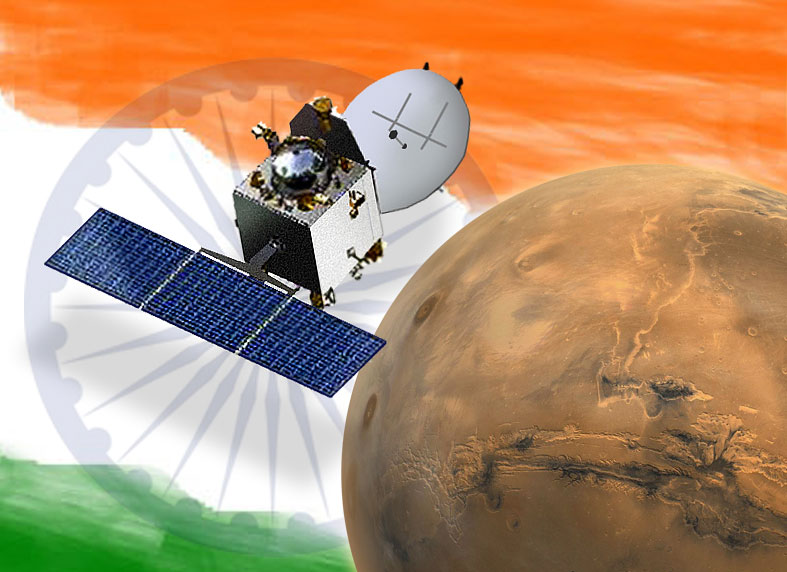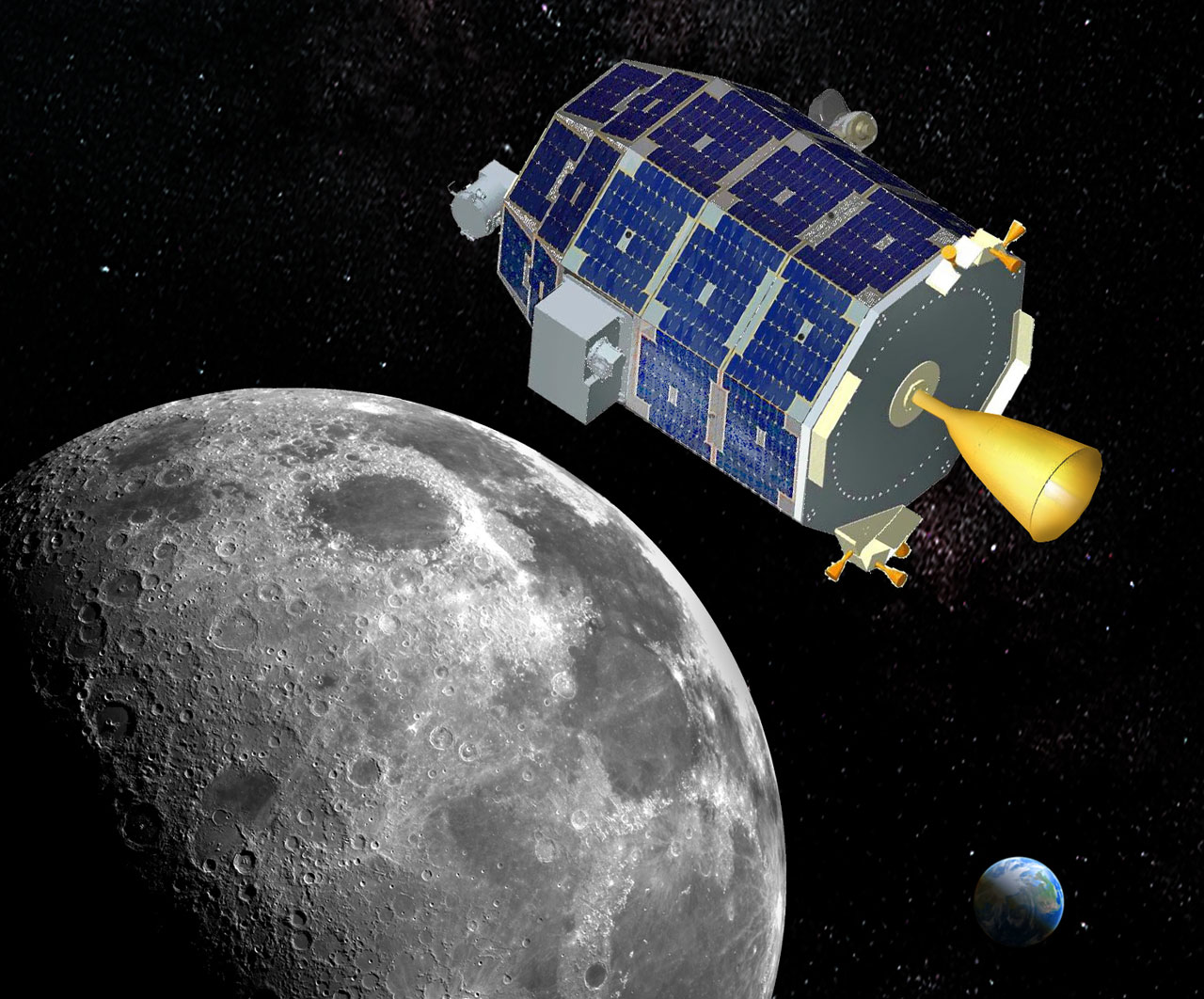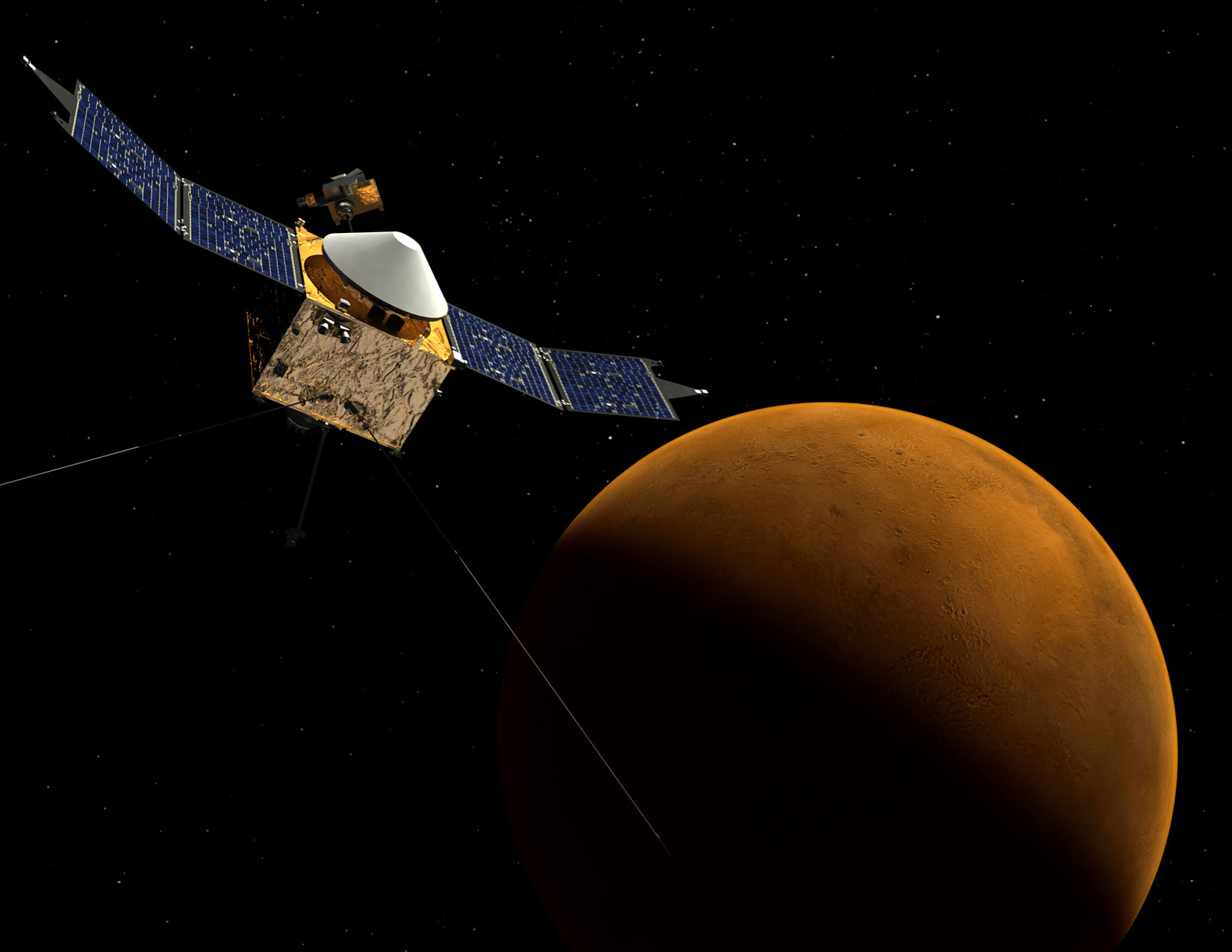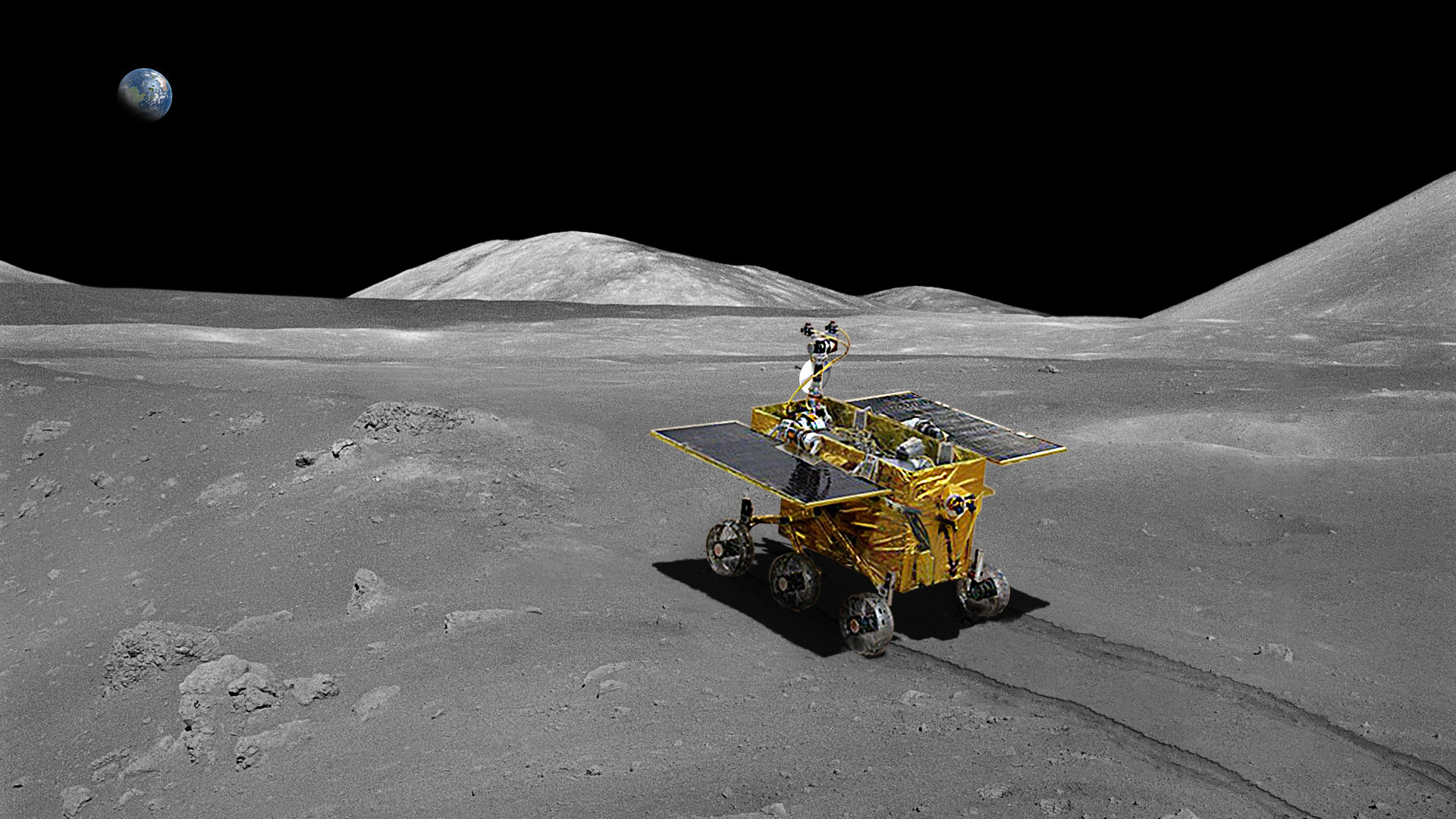The second half of 2013 is shaping up to be a very busy time for deep space missions with four new spacecraft leaving Earth. Two missions are heading to the Moon and another two travelling towards Mars. Here’s the round-up…
The Indian space agency’s MOM (Mars Orbiter Mission) spacecraft. Image: ISRO/Astro0
India sending MOM to Mars
In October (22nd), India will be sending its first mission to the red planet, the Mars Orbiter Mission (MOM) or as it is also known – Mangalyaan. In the past, Mars had rivers, lakes, oceans and salty seas. MOM will help determine why the planet lost its water and why the once thicker atmosphere changed to be primarily carbon dioxide.
While MOM’s science objective is to study the water and atmospheric story of Mars, the key to the mission’s success will be in its engineering. This will be the third deep space mission for the Indian Space Research Organisation (ISRO), but will be their first to go beyond the Moon. Succeeding in steps such as launch, Earth-to-Mars transfer orbit, navigating the craft to Mars and then entering Mars’ orbit, will all be major achievements for ISRO, regardless of any science returned.
NASA’s LADEE spacecraft enters lunar orbit. Image: NASA
LADEE to the Moon
Due to launch in August 2013, NASA’s Lunar Atmosphere and Dust Environment Explorer (LADEE) is a robotic mission that will orbit the Moon to gather detailed information about the lunar atmosphere, conditions near the surface and environmental influences on lunar dust. LADEE will use its instruments to collect dust particles from; measure variations in; and determine the composition of the tenuous lunar atmosphere. It will also clear up a mystery by finding out if lunar dust, electrically charged by solar ultraviolet light, was responsible for the pre-sunrise horizon glow that Apollo astronauts saw.
LADEE will also perform a Lunar Laser Communications Demonstration which is designed to show the capabilities of using lasers instead of radio waves to achieve fast broadband speeds to communicate with Earth.
NASA’s Martian atmospheric explorer spacecraft MAVEN. Image: NASA
MAVEN to Mars
NASA’s latest spacecraft heading to the red planet is called the Mars Atmosphere and Volatile EvolutioN (MAVEN) mission, scheduled for launch in November 2013. It will be NASA’s first mission devoted to understanding the Martian upper atmosphere.
The goal of MAVEN is to determine the role that loss of atmospheric gas to space played in changing the Martian climate through time. Where did the atmosphere – and the water – go? Why did a planet once possibly habitable to microbial life turn into a cold and barren desert world. MAVEN will determine how much of the Martian atmosphere has been lost over time by measuring the current rate of escape to space and gathering enough information about the relevant processes to allow extrapolation backward in time.
Chang’e 3 will be China’s third mission to the Moon. The previous two were orbiters and this time they are soft-landing with a robotic rover. Image: CNSA/Astro0
China Goes to the Moon
Currently scheduled for launch in November 2013 is the Chang’e 3 spacecraft operated by China National Space Administration (CNSA). The two-part spacecraft incorporates a robotic lander and a rover. It will be China’s first lunar rover and the first spacecraft to make a soft landing on the Moon since the former Soviet Union’s Luna 24 mission in 1976. The spacecraft is named after Chang’e, the Chinese goddess of the Moon, and is a follow-up to the Chang’e 1 and Chang’e 2 lunar orbiters.
The lander will carry a telescope and an extreme ultraviolet camera to make long-term continuous observations of important celestial bodies. During its 3-month mission the solar powered, six-wheeled rover can travel up to 10 kilometres from the landing site, exploring the surface and perform in-situ rock and soil analysis.
Australia’s Role
As part of NASA’s Deep Space Network, the CSIRO’s Canberra Deep Space Communication Complex is currently tasked with providing two-way radio contract with LADEE, MAVEN and MOM during the course of their missions. At this stage, China will track and support Chang’e3 for its journey to the Moon and during surface operations.





